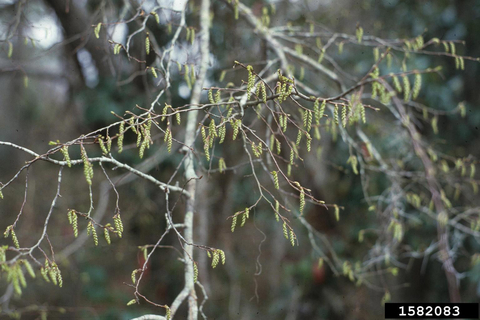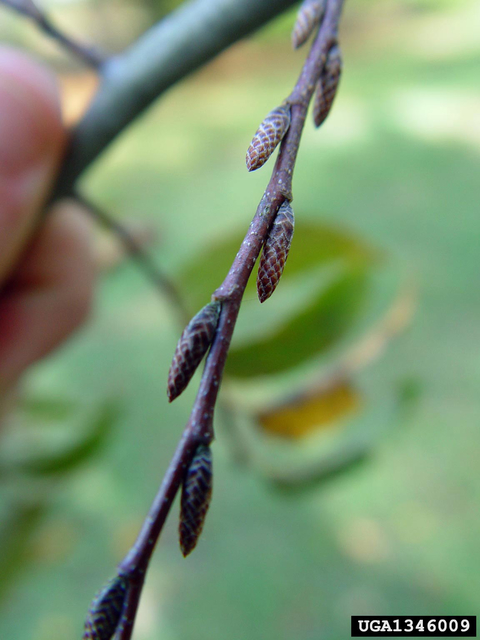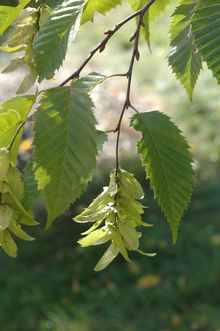Blue beech (Carpinus caroliniana), also called musclewood or American hornbeam, is a small, slow-growing tree, native to Minnesota and the eastern U.S.
In Minnesota, it is found in the understory in forests of maple, basswood, oak, cherry and white birch.
In landscapes, it works well as a small shade tree and in shady, naturalized woodlands.
One of the few landscape trees that does well in full shade, beech adapts to a wide range of soil textures, moisture levels, drainage patterns and pH levels.
Blue beech can be grown as a large shrub, a single-stemmed tree or a multi-stemmed tree.
The attractive smooth bluish-gray bark on this tree provides multiple seasons of interest. The fluted “muscle-like” wood on the branches and trunk is another striking feature of this plant.
Seeds, buds, twigs and leaves are food sources for songbirds and small wildlife.
Description
Deciduous; leaves drop in fall
Height: 20 to 35 feet
Width: 20 to 35 feet
Has an oval to rounded form
Bluish-gray bark with fluted appearance of wood
Leaves: dark green in summer and change to colorful tones of orange, red and yellow in fall
Buds: brownish red scales edged in white along the branches provide winter interest
Male flowers: catkins hang from branches throughout winter until they bloom in May
Female flowers: catkins appear in spring and are pollinated in May, resulting in fruit
Fruit: hop-like fruit hangs from branches until they break apart and shed their seed in fall
Growing blue beech
Hardiness zone: 3 to 9
Does well in full sun to full shade
Tolerates short-term periodic flooding
Dense hard wood protects from ice storms
Recommended soil properties:
Soil pH: 4.0 to 7.4
Loam soils, can tolerate clays
Moist to well-drained soil, can tolerate poorly drained soils
- Have your soil tested by the U of M Soil Testing Lab
Common problems
No serious pests or stresses are known for blue beech in Minnesota.
Cultivated varieties of blue beech for Minnesota
Cultivated varieties are selected for fall color, plant form and size, and pest and stress tolerances
One cultivar is recommended for Minnesota:
Firespire - upright with red and orange foliage in fall, 20 feet tall and 10 feet wide
Non-cultivated varieties are available, but make sure that you buy trees that are adapted to your region.
Reviewed in 2018







